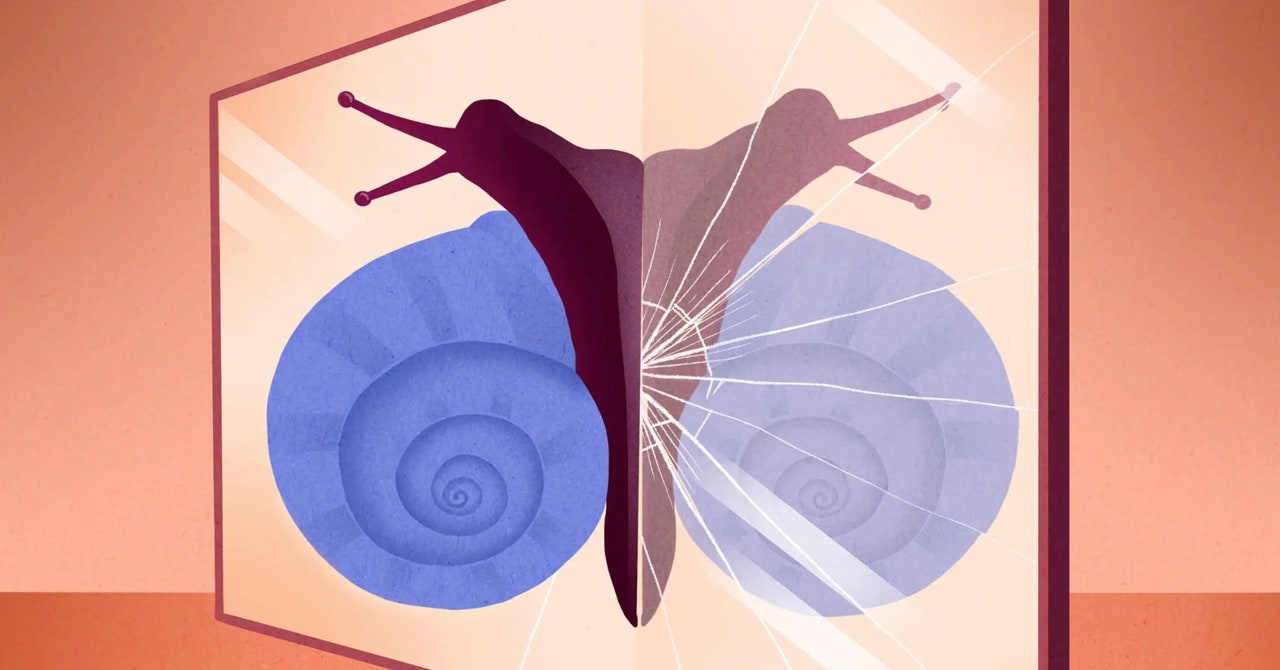
Naaman and his team discovered that chiral molecules filter electrons based on the direction of their spin. Electrons with one spin orientation will move more efficiently across a chiral molecule in one direction than the other. Electrons with the opposite spin move more freely the other way.
To understand why, imagine throwing a Frisbee that glances off the wall of a hallway. If the Frisbee hits the right-hand wall, it will bounce forward only if it’s rotating clockwise; otherwise, it will bounce backward. The opposite will happen if you hit the Frisbee off the left-hand wall. Similarly, chiral molecules “scatter the electrons according to their direction of rotation,” Naaman said. He and his team named this phenomenon the chiral-induced spin selectivity (CISS) effect.
Because of that scattering, electrons with a given spin end up aggregating at one pole of a chiral molecule (and the right-handed and left-handed versions of the molecule gather opposite spins at their respective poles). But that redistribution of spins affects how the chiral molecules interact with magnetic surfaces because electrons spinning in opposite directions attract one another, and those spinning in the same direction repel one another.
Consequently, when a chiral molecule approaches a magnetic surface, it will be drawn closer if the molecule and the surface have opposite spin biases. If their spins match, they will repel each other. (Because other chemical interactions are also going on, the molecule can’t simply flip to realign itself.) So a magnetic surface can act as a chiral agent, preferentially interacting with only one enantiomer of a compound.
In 2011, in collaboration with a team at the University of Münster in Germany, Naaman and his team measured the spin of electrons as they moved through double-stranded DNA, confirming that the CISS effect is both real and strong.
That’s when research into the effect and its possible applications “started to boom,” Naaman said. He and his team, for example, developed several ways to use the CISS effect to remove impurities from biomedicines, or to exclude the wrong enantiomers from drugs to prevent major side effects. They’ve also explored how the CISS effect might help to explain the mechanisms of anesthesia.
But they only began working seriously on the idea that the CISS effect plays a part in the rise of biological homochirality after they were invited to collaborate on a hypothesis by a team at Harvard led by the astronomer Dimitar Sasselov and his graduate student S. Furkan Ozturk.
A Physics Perspective
Ozturk, the young lead author on the recent papers, came across the homochirality problem in 2020 when he was a physics graduate student at Harvard. Unhappy with his research on quantum simulations using ultracold atoms, he flipped through a science magazine detailing 125 of the biggest mysteries in the world and learned about homochirality.
“It looked really like a physics question because it’s about symmetries,” he said. After reaching out to Sasselov, who is the director of Harvard’s Origins of Life Initiative and who was already interested in the question of homochirality, Ozturk switched over to become a student in his lab.

